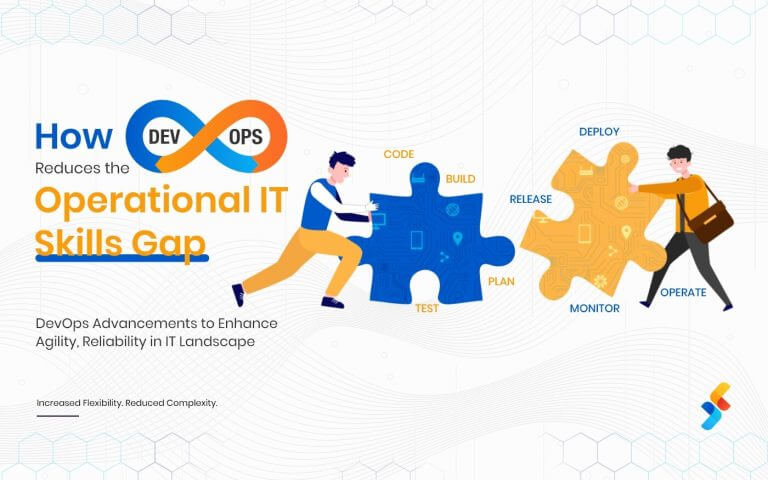Cloud computing has transformed how enterprises build, scale, and operate digital applications. Organizations are now provisioning resources on demand, scale workloads dynamically, and pay only for what they consume. Yet, despite this flexibility, most enterprises continue to fight with one critical challenge: controlling cloud spend.
Cloud cost optimization is a top priority across industries. According to leading reports, more than 80% of enterprises cite cost efficiency as one of their key drivers for cloud adoption. However, many also admit that they overspend significantly each year, with wasted resources accounting for nearly one-third of their bills. While businesses invest heavily in cloud consulting services and frameworks to cut costs, optimization efforts often stall.
The core reason? A lack of visibility into workload behavior.
Without a clear understanding of how workloads consume resources, optimization becomes guesswork. Enterprises either under-provision and risk performance gaps, or over-provision and pay for idle resources. In this blog, we’ll explore why visibility is central to cloud cost optimization services and how businesses can build a cloud strategy that aligns cost efficiency with operational excellence.
The Cloud Cost Challenge
At first sight, cloud cost optimization seems a direct process: shut down unused instances, right-size resources, and shift to reserved or spot instances. In the initial days of cloud computing, these were considered the predictable workloads. Yet, in practice, enterprises find themselves facing spiraling bills.
This challenge arises because the cost in the cloud is not tied to infrastructure alone; it is tied to behavior. Applications behave differently under varying loads, regions, and configurations. An application that performs optimally at a certain scale may suddenly demand excess resources during peak operation. Similarly, microservices and containerized applications bring its fair share of complexity—while they offer flexibility, they also distribute costs across multiple services, making visibility even more challenging.
Optimization of workload efforts fail when businesses look at costs in isolation, without correlating them with workload patterns. This is where cloud strategy plays a crucial role, helping enterprises link workload behavior with financial governance.
Why Visibility Into Workload Behavior Matters
Visibility is about more than monitoring resource utilization—it is about understanding how workloads behave across the entire lifecycle. Below are some reasons why workload visibility is indispensable for cost optimization:
1. Identifying Idle and Underutilized Resources
Workloads run continuously, whether demand fluctuates or not. Without visibility, teams cannot distinguish between essential and idle usage. This leads to waste from:
- Development or test environments left running 24/7
- Over-provisioned instances to “play safe”
- Storage volumes and snapshots consume capacity long after use
Granular workload visibility helps isolate these patterns so organizations can act decisively.
-
Right-Sizing Resources Based on Actual Demand
Instance sizing is one of the biggest sources of cloud waste. Without workload insights, teams often default to larger instance types “just in case,” which rarely get reviewed later. This results in unnecessary overspending from:
- Instances running far above actual workload demand
- Over-provisioned resources deployed without usage validation
- Lack of periodic checks to align resources with workload patterns
Visibility enables organizations to map real demand to the right instance type, ensuring resources fit real-world usage instead of assumptions.
-
Optimizing Auto-Scaling Policies
Auto-scaling is designed to adjust resources dynamically with demand, but it only works when configured correctly. Without workload visibility, scaling policies often miss the mark, creating issues such as:
- Under-provisioning that impacts application performance
- Over-scaling that drives up unnecessary costs
- Thresholds set without reference to actual workload behavior
Analyzing workload patterns allows businesses to fine-tune auto-scaling rules to strike the right balance between performance and cost efficiency.
-
Forecasting and Planning for Future Demand
With traditional practices, enterprises struggle to predict cloud budgets accurately, especially when demand fluctuates. Workload visibility makes planning more reliable by enabling:
- Accurate forecasting of usage spikes based on business cycles
- Smarter capacity planning aligned with seasonal or cyclical needs
- Proactive use of reserved instances or savings plans for predictable workloads
This foresight prevents both overspending and under-preparedness in cloud operations.
-
Correlating Performance with Cost
Cloud investments should always be tied to business outcomes. Without visibility, organizations lack clarity on whether spending drives value. Visibility closes this gap by showing:
- Whether higher-performing workloads justify added costs
- If excess resources are being consumed without measurable impact
- How spend can be directly connected to business performance metrics
This correlation is crucial for meaningful and sustainable cloud cost optimization.
The Risks of Optimizing Without Visibility
When enterprises bid to cost optimization without workload visibility, they risk three common pitfalls:
-
Short-Term Gains, Long-Term Losses
Turning off instances or strongly downsizing resources may reduce immediate costs, but without knowing workload behavior, such measures can cause outages or loose performance. In turn, this leads to revenue loss and damaged customer experiences.
-
Hidden Waste
Cloud optimization efforts often focus on compute, but hidden costs lurk in storage, networking, and managed services. Without visibility into how workloads interact with these services, businesses fail to uncover the “silent” drivers of cost.
-
Misaligned Business Goals
Cost optimization cannot exist in a vacuum. Without visibility, IT teams may chase cost reductions that impair business outcomes, such as slower application response times or reduced availability.
Why Build Visibility into the Optimization Process
So, how can enterprises ensure that visibility becomes a cornerstone of their cost optimization strategy? Here are key practices:
1. Adopt Observability-First Mindset
Traditional monitoring provides visibility over utilized data but falls short of explaining workload behavior. Observability—collecting, correlating, and analyzing logs, metrics, and traces—offers deeper insights. Enterprises must adopt observability as the foundation of workload visibility. It keeps track of every microservice, pod, node, and other application locations and behavior to help with aggressive monitoring and proactive decision-making.
2. Leverage Cloud-Native and Third-Party Tools
Cloud providers offer native tools such as AWS CloudWatch, Azure Monitor, and GCP’s Operations Suite. These provide a starting point but may lack cross-platform visibility. Supplementing the observability mechanism with third-party platforms along with cloud native tools or engaging cloud consulting services, ensures a holistic view across multi-cloud or hybrid environments.
3. Tagging and Resource Attribution
Tagging resources by business unit, application, or project ensures that workloads can be tracked and costs can be mapped directly to ownership. This visibility helps identify not just technical inefficiencies but also organizational ones. This way, cloud resources and business budget can be effectively designed and implemented for better ROI.
4. Implement FinOps Practices
FinOps bridges the gap between finance, operations, and engineering. It emphasizes visibility as the first step in cloud cost governance. By aligning teams around transparent workload data, cloud FinOps ensures optimization decisions are informed and accountable. Many cloud consulting firms position FinOps at the core of their approach.
5. Automation for Continuous Optimization
Visibility is not an occasional business need. Automated policies—such as shutting down idle environments after hours or auto-right-sizing resources—ensure that workload insights continuously translate into cost savings.
Strategic Outcomes of Workload Visibility
When organizations embed workload visibility into their cost optimization strategy, the outcomes extend beyond savings. They gain:
- Operational Resilience: Optimization decisions are informed by workload behavior, ensuring stability.
- Predictability in Cloud Spend: Finance teams can forecast budgets with higher accuracy.
- Business Agility: By aligning cost optimization with workload insights, enterprises can experiment, scale, and innovate with confidence.
- Improved Collaboration: Developers, operations, and finance teams share a unified understanding of costs tied to workloads.
These benefits underline why enterprises increasingly rely on cloud cost optimization strategy delivered by expert partners to combine technology, governance, and strategy into a unified model.
Conclusion
Cloud cost optimization is not about reducing resources that hurt the application performance or functionality —it is about aligning consumption with value. Yet, without visibility into workload behavior, optimization efforts turn into empty talkers. Visibility into applications or workload behavior transforms optimization from response to readiness, a strategic practice. It empowers enterprises to right-size resources, optimize scaling, forecast demand, and link costs to business outcomes.
We’re already in a cloud-first world, where agility and efficiency define competitiveness, and workload visibility is the new foundation of successful cloud cost optimization.












